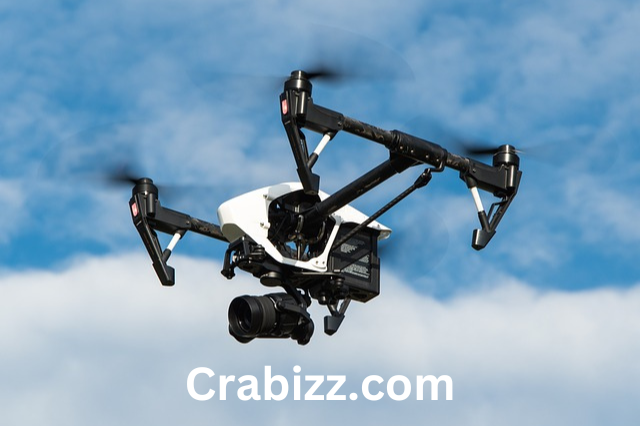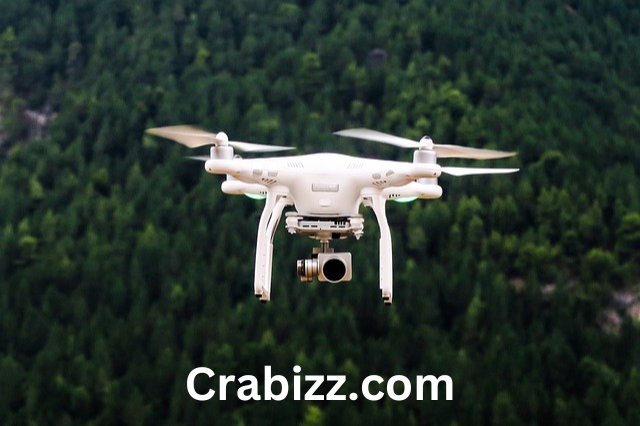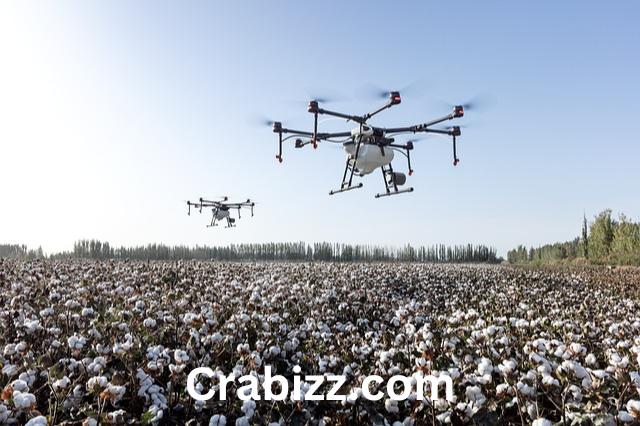Drone systems, which are called unmanned aerial vehicles (UAVs), have become revolutionary and interactive tools for industries and redefined new technology. Whether utilized for professional purposes such as for military or prohibited civil reasons, these sophisticated machines continue to determine the future. Over the course of several years, drones have become an attachment in agriculture, logistics, cinematography, management of disaster, and preservation of the environment among others.
The present book provides a general and concise background of it, their applications, advancements, regulations and policies, and importance worldwide.
1. What Are Drones?
UAVs are flying machines also known as drones whose operation does not involve a human operator. Operated either from a distance or through built-in software, It include more sophisticated sensing instruments, cameras, and leading mechanisms.
- Key Features:
- In this context, they include self-governing or self-operating nature.
- Aesthetic suited to incorporation into economically designed products such as mobile phones and laptops among others..
- With GPS, cameras, and sensors.
- It can take off vertically and can also land vertically .
It is an effective tool present in differentspheres of activity from the military to the entertainment industry. That is why they are such versatile instruments for businesses and governments today.

2. History of Drones
Drones have been in use since the early 1900s when experiments on unmanned aerial vehicles started. Modern, over the decades, their aim and functions have changed a great deal.
Early Beginnings
- World War I (1916-1918): The preliminary pilotless vehicles were invented as targets for the military applications.
- 1930s: The Kettering Bug was a first-generation unmanned aerial vehicle which was designed by the U.S. Army .
World War II
- In the Second World War, It played the role of observing the enemy nucleus and as a bait. Germany used cruise missiles later recognized as proof that the nation was attempting to develop modern UAVs.
Cold War Era Drones
- The principal motivation for establishing of It during the Cold War is surveillance. During this form of aerial vehicle in the initial years, the United States engaged in the development of the Lockheed D-21 reconnaissance drone.
Modern Era Drones
- Presumably by the onset of the 2000s, It became smaller and affordable besides being more buoyant. Their adoption expanded into commercial industries and recreational activities.
3. Types of Drones
Categorization of drones can be made with regard to their physical size, the service they provide or their construction. Here are the main types:
1. Based on Size Drones
- Nano Drones: Extremely small and often used for surveillance.
- Mini Drones: Popular for recreational purposes and indoor flying.
- Medium Drones: Commonly used in agriculture and logistics.
- Large Drones: Designed for military and industrial applications.
2. Based on Function
- Reconnaissance Drones: For surveillance and data collects purposes.
- Combat Drones: The weapons that the civilization possesses are for warfare purposes.
- Delivery Drones: Designed for transporting goods.
- Agricultural Drones: Help in precision farming.
- Camera Drones: Used in photography and filmmaking.
3. Based on Design
- Fixed-Wing Drones: Are similar to conventional aircrafts and suitable for both long haul missions.
- Rotary-Wing Drones: -type: quadcopters and helicopters , perfect for hovering and rotation.
- Hybrid Drones: partial fixed wing and partial rotary blade.
4. How Drones Work
It operate using a combination of hardware and software components:
1. Core Components Drones
- Propulsion System: Comprise of motors and propellers for flying.
- Flight Controller: Serves the function of the controller which umbilically receives data from various sensors on the drone by the use of ALPs.
- GPS Module: Provides location tracking and navigation.
- Battery: Supplies energy to the entire drone and part of its subassemblies.
- Sensors: Contains gyroscope, barometers, accelerometers for stability.
2. Control Systems of Drones
- Remote Control: Operated by a pilot using a transmitter.
- Autonomous Operation: Executed through designed flight plans or algorithms are used to make decisions for the system.
3. Communication Drones
It feature real-time communication options within radio frequencies, WIFI, or cellular network with controllers.

5. Applications of Drones
It have diverse applications across multiple industries:
1. Military Use of Drones
- Surveillance: Monitoring enemy activity with minimal risk.
- Combat Missions: Targeting with precision weapons.
- Search and Rescue: Locating missing personnel in hostile environments.
2. Commercial Use of Drones
- Agriculture: Crop monitoring, pest control, and irrigation management.
- Logistics: Delivery of goods, including medical supplies.
- Real Estate: Capturing aerial footage of properties.
- Film Industry: Creating dynamic and cinematic shots.
3. Environmental and Scientific Applications
- Wildlife Monitoring: Tracking endangered species.
- Disaster Management: Gauging loss in the natural calamities.
- Climate Research: Collecting data on weather patterns.
6. Technology in drones
The rapid pace of innovation has made It more efficient and versatile:
1. Registration and Licensing
- Currently, it is still a usual practice in most countries that It should be registered while their operators ought to have a license.
2. Enhanced Batteries
- Increasing flight time and range.
3. Advanced Cameras
- High-definition cameras with zoom and night vision capabilities.
4. Swarm Technology
- Coordinating multiple It for complex tasks like search missions.
7. Drone Regulations and Legal Frameworks
Governments worldwide regulate drone usage to ensure safety and privacy:
1. Registration and Licensing
- It have some limitation; They need registration while pilots of these have to be licensed within many countries across the globe.
2. Flight Restrictions
- No-Fly Zones: Areas near airports, military installations, and sensitive locations.
- Altitude Limits: Usually capped at 400 feet.
3. Privacy Laws
- Restrictions upon stalking and monitoring the actions of individuals and their surroundings by construction and technology.
8. New Business Opportunities and Potential Business Ethics
Despite their benefits, drones face several challenges:
1. Technical Challenges
- Limited battery life.
- Vulnerability to hacking and signal interference.
2. Ethical Issues
- The issue of security and privacy came up.
- Implementation of It in military combats poses some few ethical issues.
3. Environmental Impact
- Threats to wildlife and the environment.
9. Future of Drones
It are poised to play an even greater role in the coming years:
1. Drones Urban Air Mobility
- There are already plans to start using them for passenger transport especially within the urban setting.
2. Expanded Delivery Services
- L’division de Amazon ainsi que d’UPS expérimentent des moyens de livraison avec des It.
3. Integration with IoT
- Using It for the IoT to make the information exchange in real time.
4. Space Exploration
- They already have ideas for drone on space and are in the development of It that could for instance be used on Mars.
10. Investing in the Drone Industry
The drone market is growing rapidly, making it an attractive investment opportunity:
1. Market Growth
- Prediction made that the revenue for the industry will be $58 billion by 2026.
2. Leading Companies
- DJI: Dominates the consumer drone market.
- Parrot: Known for innovative designs.
- Northrop Grumman: Concerned with military Unmanned Aerial Vehicles or UAVs.
3. Investment Strategies
- Contribution towards drone manufacturing companies as an invesment.
- Exploring stocks of businesses leveraging drone technology.

11. Conclusion
Unmanned aerial systems are transforming sectors and providing answers to present-day problems. They range from improving the level of efficiency in our farming to even more saving lives in cases of disasters. Drones will only grow even further intertwined in the world as years progress making ways how people perform work, travel, and engage with the environment.
But for those who invest, are interested in technology, innovation or simply in It, the drone industry is a world.


